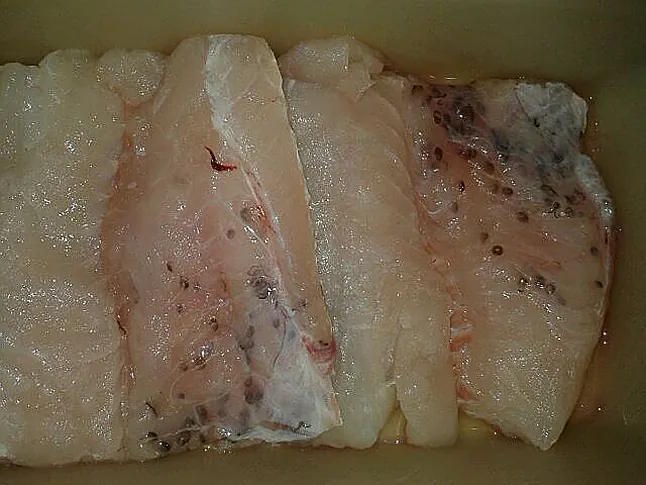As we eat out more often, go to beach bars... summer arrives and fish consumption soars, and caution must be taken not to get infected with anisakis. Researchers from the University of Granada have shown that if the fish's digestive tract is removed immediately after capture, right on the same boat, the presence of this harmful parasite for human health decreases by more than 40%, as reported by Efe.
The study compared the presence of parasites in whole fish and eviscerated fish, meaning those from which the digestive tract has been removed on board the boat after capture, as reported by the University of Granada. To do this, megrim fish from the Bay of Biscay were purchased at fish markets in Granada.
In whole fish, two types of parasites are visible to the naked eye: anisakis and Hysterothylacium (a genus of parasitic worms). The only one that affects humans is anisakis, but the presence of helminths (worms) causes the fish to be rejected by consumers.
This study shows that removing the fish's digestive tract on the boat reduces the abundance of anisakis by more than 40% and completely eliminates Hysterothylacium.
The results indicate that removing the fish's digestive tract on board immediately after capture, at least in the case of megrim fish, reduces the risk of acquiring anisakiasis, the infection caused by anisakis.
At the same time, University of Granada professor Manuel Morales Yuste explains that the complete removal of Hysterothylacium improves the appearance of the fish, making it more appealing and increasing its commercial value.
The researchers emphasize the importance of continuing to study these evisceration practices on board to optimize their effectiveness, with the aim of minimizing, and even eliminating, the presence of nematodes in commercial fish, thus reinforcing food safety.
In any case, the authors of the study insist on the need for consumers to follow the recommendations of the Spanish Agency for Food Safety and Nutrition, as well as the European Food Safety Authority. Both warn against consuming fish that has not been previously subjected to a thermal process.
"Fish (whether consumed raw or not) is only safe if it has been frozen at -20°C, to the core of the piece, for more than 24 hours (it is recommended a week in freezers of at least three or four stars) or alternatively if it has been cooked at a minimum temperature of 60°C, throughout its mass, for more than one minute," specifies Professor Francisco Javier Adroher.
